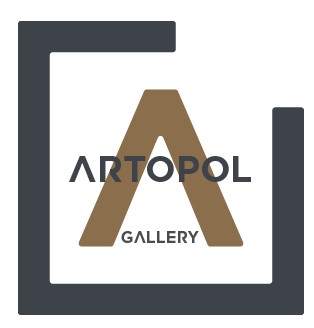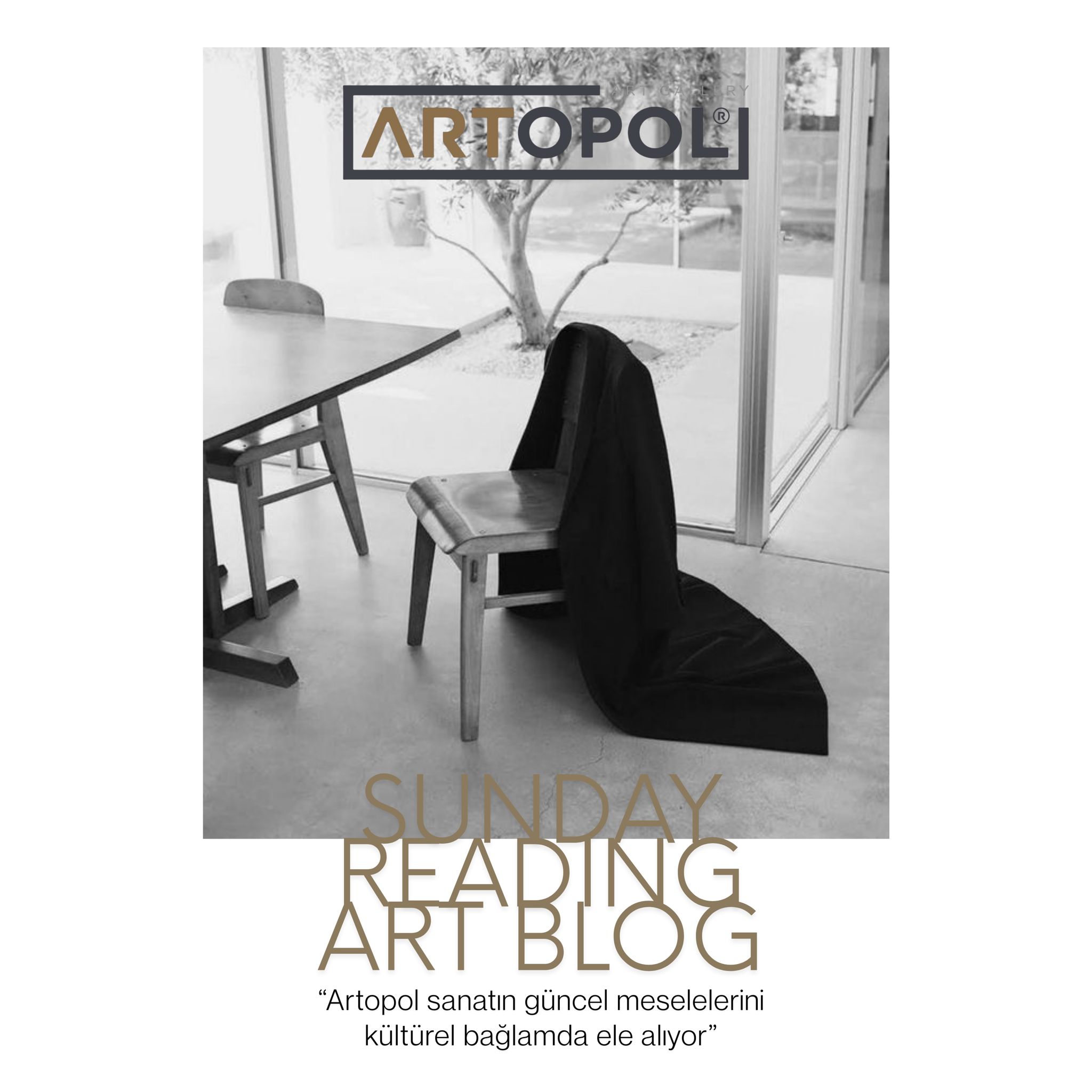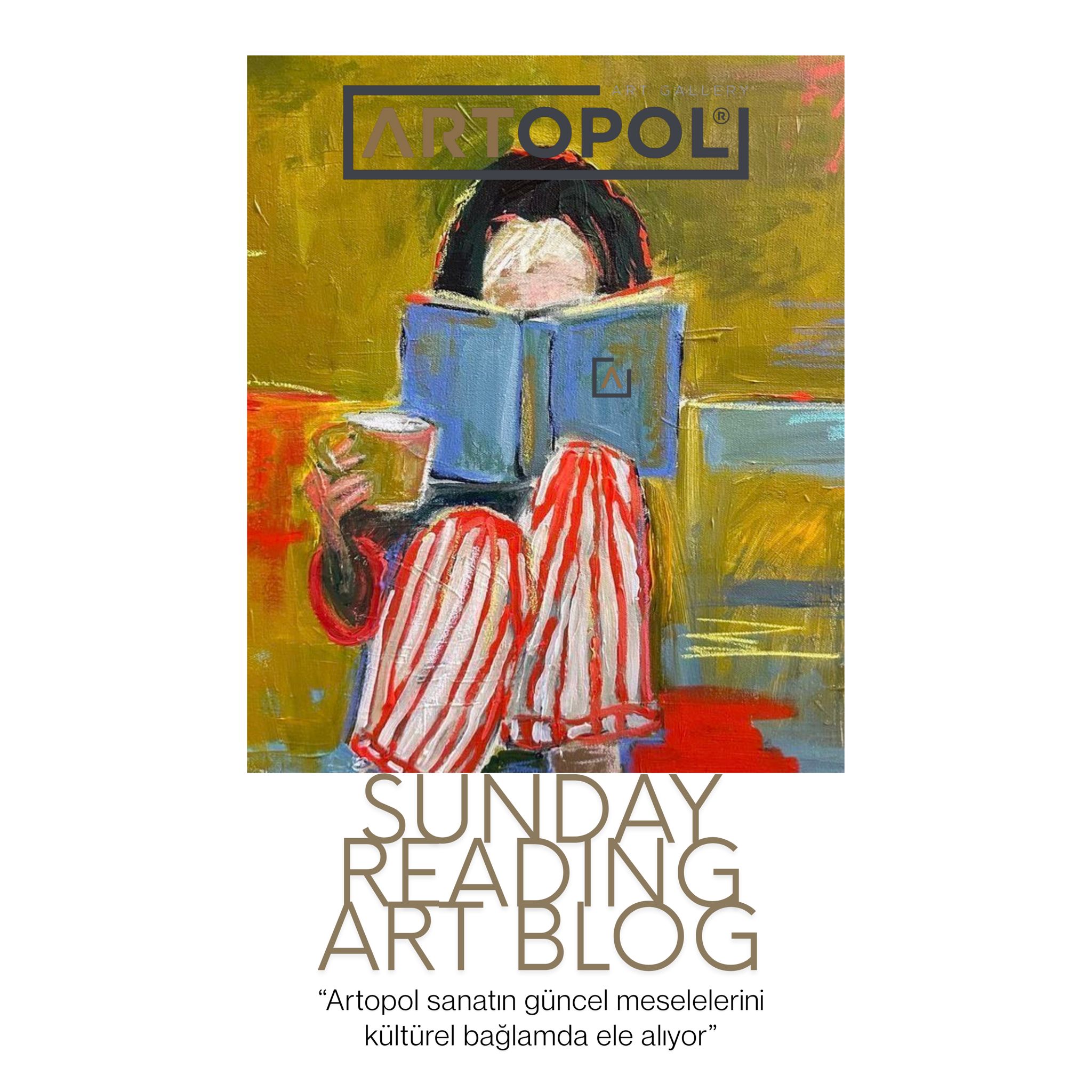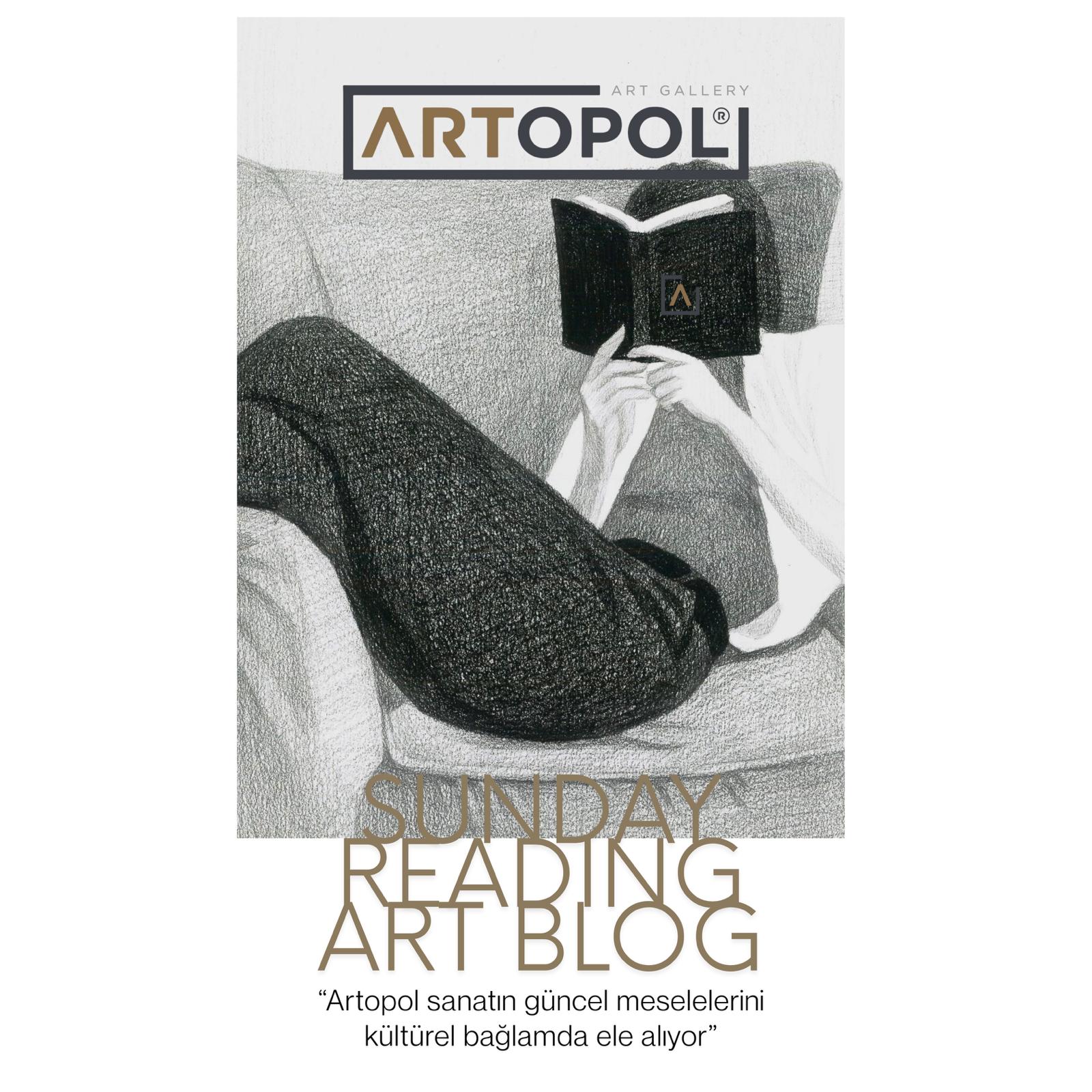MAHİR GÜVEN
"Painting leads itself, really. It teaches you something too, bringing coincidences that guide your way.”
Mahir Güven paints works in which something of the time he lives in can always be captured, even after years have passed. He tells the stories behind people’s problems, contradictions, and bodies. Sometimes he works in colorful tones, sometimes in simple ones — but always nourishes his art with the power of Cubism and a minimalist understanding. In his works, sometimes the figure, sometimes the story, sometimes imagination, and sometimes space takes center stage. His figures are calm but always full of emotion.
YİĞİT YAZICI
"The perfection of nature, the excitement of life, the vast intelligence within everything that exists — painting is my guide on the path to understanding myself... From the first moment we step into life, perhaps our entire life scenario unfolds under the rule of a simple question: Why do we exist...? The mystery created by this question and the fantasy world it brings forth pushes us to be creative. In the existence of questions and the absence of answers, those who see the miracle of life and find balance in its contradictions choose to be happy. Happiness is a choice.”
Yiğit Yazıcı explains his art — and the way he perceives life — through this perspective. To him, questions and answers are sources of inspiration that transform into works of art in his hands. Through mottos, a richness of color and pattern, and a synthesis of nature and human creation, he presents a vivid representation of life’s energy.
FERRUH KARAKAŞLI
"If art contributes to energy, to a positive state of being — if it lets one dance through life with color and joy — then it has done a good job.”
Ferruh Karakaşlı associates happiness with his paintings, which he describes as antidepressants — and at the core of his art lies this pursuit. Since childhood, his joyful journeys into a colorful world of imagination have merged with painting, forming the early steps of his creative practice where imagination and expression meet.
Karakaşlı turns everything he touches into art — both as a designer who made his mark in the fashion world and as a devoted painter. His mastery of patterns, evident in the fabrics he designs, also shines through in his complex compositions. With his intimate relationship with colors, he crowns his works and rightfully earns the title “The Man of Colors.”
CÖMERT DOĞRU
"At first glance, my works seem hyperrealistic — but actually, I add detail only where I want it. My paintings have a brushstroke feel. That makes them more sincere — and that’s what I want. I want them to be like me: genuine.”
Cömert Doğru brings the aesthetics of realism together with imagination, shaping his works with high levels of detail to give life to the images that drift through his mind. Emphasizing emotions and their expression, the artist constructs compositions that are both symbolic and surreal. Fish often appear as reflections of emotions he wants to convey — sometimes accompanying figures, sometimes dominating the entire painting. In every case, they express the artist’s creative thought with surprising realism.
ŞERİF SÜMER
Is the age of speed an advantage or a disadvantage? According to Şerif Sümer, the pace of modern times — whether in the real or virtual world — has reached a point beyond human capacity. Yet, the desire for socialization and adaptation never fades. For the artist, this process causes personality splits and synthetic communication. Thus, Sümer sees modern life as a “theater” stage, exploring what he perceives as deformation in both social communication and his paintings. Drawing from fictional scenes and synthetic imagery, he blends modernity with traditional art to create new expressions inspired by miniatures.
NİLAY ÖZENBAY
Nilay Özenbay expresses reality through abstract, curving surfaces in her figurative-abstract works. Her unique perception softens the hardness of the material through an emotional dialogue on the surface. With an aesthetic vision, the artist seeks beauty throughout her life and reflects it in her sculptures. The harmony between figure and surface enhances the sense of motion in her works.
Her recent works reference various phenomena from popular culture. The formal language of fictional characters transcends their meaning in social life, transforming into artistic expression through sculpture. Her imaginary childlike characters turn their cuteness and narratives into form.
ESRA ŞATIROĞLU
Esra Şatıroğlu creates paintings inspired by her own intuition within the free realm of abstract art. Drawing from her personal tastes and perception of life, her abstract paintings become not only reflections of her inner world but also spaces where everyone can find something of themselves. Inspired by Eastern mysticism, she creates a spiritual and cosmic space. Focusing on simplifying the complex subconscious, she builds her compositions using basic geometric forms. These interlocking or interconnected forms point to new horizons on the canvas.
ECE GAUER
"The symbols I use are rooted in this land — sacred geometry, Islamic motifs, Byzantine patterns, Andalusian architectural symbols… All of these exist here. Like our culture, they are multilayered. It’s the harmony within chaos. That’s what I pursue.”
Ece Gauer works densely on her canvases with a decorative approach. She merges the figurative tendencies of Western art with sacred geometric elements. Drawing inspiration from diverse cultures, she plays with contrasts in her works — between reality and fiction, solid and void, ancient and modern — exploring the concept of “in-between space.” For Gauer, painting provides a gateway for freely wandering between these worlds.
Inspired by life itself, Gauer combines the lessons learned from disciplines such as illumination, architecture, ceramics, and miniature art to enrich her works. For her, being a painter is not just about looking at paintings — it’s about understanding the essence of creation.
ELİFKO
"Beautiful women, handsome men — but there are stitches across them. This breaks the ‘we’re all beautiful and happy’ illusion of social media.”
Social media — one of the inseparable parts of our lives, where we share even our most private moments — carries a deep irony. How real are the lives we see? Elifko, as an artist questioning this, explores modern society’s obsession with perfection and narcissism. She paints her figures with golden crowns, symbolizing how people present themselves as kings and queens on social media. To her, the hidden pains and longings of these false worlds are revealed through the stitched lines on the canvas — feelings that, as she says, “sting like a needle.”
Her plate series draws on Thomas Hobbes’ saying, “Man is a wolf to man.” She critiques how people consume each other like commodities, examining both individual and collective behaviors of modern society through art.
HATİŞ
"I believe the balloons reflect my colorful world — they represent me.”
Hatiş defines her works, in which she masterfully applies color theory, as pop-surreal. Combining the iconic imagery of pop art with her own imagined worlds, she creates vibrant, dynamic, and layered paintings. She brings together different systems such as image, language, and narration. The iconic objects and color spectrum she uses are interconnected yet belong to a unique time and space. The geometric patterns and colors in her paintings are restructured on canvas or paper fragments with a painterly approach. By evoking a desire in the viewer to “set free the balloons” trapped within symbols, she touches on psychology — the true layer beneath her use of color. Her figurative works transform the lively worlds of extraordinary characters into art.
HÜLYA SÖZER
"The symbol in my works is woman!”
Hülya Sözer creates diverse, sometimes contrasting ceramic pieces adorned with elegant, radiant, and emotional women. While she also addresses social themes, she never compromises on aesthetics. Her style — evident in both purely sculptural and functional works that evoke a Rococo feel — is her signature. The faces she creates express different and intense emotions. Her inspiration often comes from her inner world, a book, or a simple everyday conversation. By strengthening traditional ceramic art with contemporary ideas, she brings to life powerful female figures who hold a mirror to the viewer, helping them discover their own emotions.
EDA TAŞLI
Eda Taşlı places fairy-tale characters into real life through her sculptures with exaggerated forms that preserve their aesthetic value. Carved from wood, her works are somewhat childlike — yet they appeal to everyone by touching the pure side within each person. Drawing inspiration from the emotional diversity of characters in Russian literature, Taşlı makes the unseen visible. She transforms the self into form, giving each of her sculptures a slightly astonished expression — perhaps a reflection of the viewer’s own surprise when faced with the sculptures’ lifelike yet storytelling nature.
SULTAN ADLER
Living and working between Istanbul and Berlin, Sultan Adler draws from diverse cultures and reflects this in her art through symbolic imagery. The carpet motif, a reference to migration and her cultural identity, frequently appears in her works as a result of this influence. Another recurring symbol, the “eagle,” holds various meanings throughout history and takes on new significance in her pieces.
Technically, the artist employs traditional materials and methods, while her repeated use of symbols is influenced by the Pop Art movement. Citing Andy Warhol’s 1962 “Gold Marilyn Monroe” (MoMA, New York) as a key inspiration, Adler reshapes traces of her past within her paintings. Applying thick layers of oil paint with her fingers instead of a brush, she adds physical depth and texture to her canvases.
RAŞİT ALTUN
According to Raşit Altun, humans carry a crowd within themselves. This crowd is not only connected to their own era — it comes from their ancestors and continues into future generations. Altun shares his canvas with this vast collective of humanity that marks the ages, begins and ends eras, and shapes history. For him, understanding humanity also means understanding its plurality — the body, the mass, and the stance or behavior formed when together.
This bond with human collectivity can be sensed across his canvases. The fluid masses in his paintings bend and flow endlessly in time, while figures quietly disperse only to reappear in another painting. The human crowd is always in motion — traveling from one canvas to the next. Through this continuous flow, Altun’s crowds and forms release immense power, creating a deep connection between light, shadow, and movement within the work.
Written by: Zeynep Dikmen



